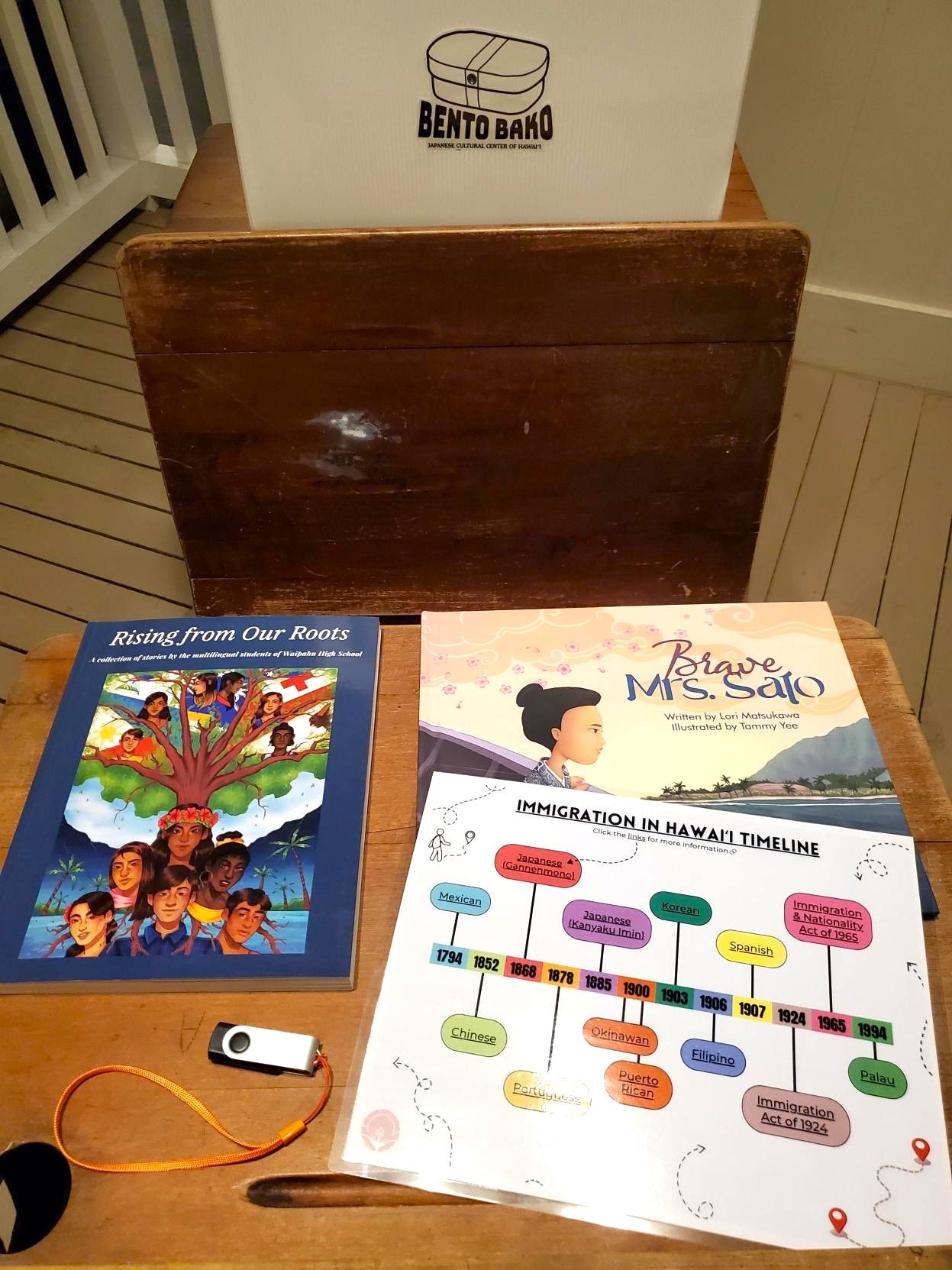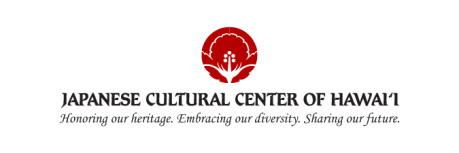Overview
Bento Bako translates to “lunch box” or “packed lunch” in Japanese. They are metal containers the immigrant plantation laborers used to carry their lunch into the field. Laborers would often share their food with each other. The sharing of food between different ethnic communities in the field led to the creation of local Hawaiʻi cuisine. The Bento Bako is the precursor to the modern plate lunch of a main dish, rice, and salad/vegetables. Bento Bako contains various compartments for food but when presented in one container, it creates a delicious, harmonious meal.
Continuing this theme, the JCCH has developed an educational program called “Bento Bako (Discovery Box)” filled with curated lesson plans (with assessments, activities, handouts, and rubrics), replica artifacts, books, and additional resources to be used in the classroom. Educators across the state will be able to borrow the Bento Bako (Discovery Box) and use it in the classroom incorporating hands-on, object-based learning while also promoting tactile and kinesthetic activities. These educational tools encourage teachers and students to learn from cultural objects, scaffold critical thinking, understand through observation, and inspire creativity.
Who Can Use It
Through the Japanese Cultural Center of Hawaiʻi (JCCH), educators in Oʻahu (K-12) will be able to check out Bento Bako (Discovery Box) to use in their classroom.
How It Works
Complete the CHECKOUT FORM. Educators can select a Bento Bako (Discovery Box) based on a certain standard and grade level. Then go to the JCCH and pick up the Bento Bako (Discovery Box) at your designated date and time, sign a terms of use form, double-check the materials are there, and now they’re ready to be presented in the classroom.
How Bento Bako (Discovery Box) Can Be Used in the Classroom
- Learn about the history of Japanese immigration and internment/incarceration
- Learn about migration to Hawaiʻi
- Observing objects and making conclusions
- Discuss the reasons why people move
- Use storytelling as a tool to learn about diversity and inclusion
- Promote tactile and kinesthetic learning
- Use as additional and supplement lesson plans
- Boxes must be returned by 30 days after check-out
Digital Assets
Downloadable curriculum includes lesson plans, activities, internet sources, assessments, rubrics, and additional handouts (if applicable).
Physical Assets
Bento Bako (Discovery Box) includes books, replica artifacts, and additional resources.
Bento Bako (Discovery Box) Description

Content Standard SS.3.3.15.2: Movement
Have you ever wondered where your grandparents or great grandparents came from? This exploratory activity is designed for use in third grade, ready to print and use. It addresses the Social Studies standard: Content Standard SS.3.3.15.2 (Investigate factors that influence why people migrate and where they settle). It is meant as a standalone lesson or in conjunction with Content Standard SS.3.3.17.5 including ELA options.
Students will go home to investigate their family’s movement and migration in Hawaiʻi or beyond. From information gathered, students will create a timeline to trace their family’s movement.
All lesson plans include internet resources, assessments, post activity questions and sample rubric to use in its entirety or can be taken apart into sections.
Content Standard SS.3.3.17.5: Chronological Thinking
This exploratory activity is designed for use in third grade, ready to print and use. It addresses the Social Studies standard: Content Standard SS.3.3.17.5 (Analyze connections among historical events using a timeline). It is meant to be used as the second half of Content Standard SS.3.3.15.2. Also included in this lesson plan is Inquiry Standard SS.3-5.2.3 (Gather relevant information from multiple sources that would be helpful in addressing compelling and supporting questions).
Using the resources of the Gannenmono, the Kanyaku Imin, the Okage Sama De script, and the links in the dates listed, students can learn about the waves of immigration in Hawaiʻi and why groups of people moved there.
In the Timeline Analysis Activity, students are asked to layer their family migration points onto the timeline given. They will compare to see if their family movement coincides with any of the points in the historical timeline.
Cross Curricular with narrative, informative, and opinion writing prompts are included. Students have the option to write a story about their arrival in Hawaiʻi aboard the Gannenmono and what it’s like adjusting to their new life. Students have the option to write an informative essay of why people migrate. Students also have the option to write an opinion essay if they would have left Japan on the Gannenmono.
This lesson plan comes with a Timeline Analysis Activity, graphic organizers and outlines for all three writing prompts, and sample rubrics for the timeline and all 3 writing prompts.
This project is supported by the State Foundation on Culture and the Arts, through appropriations from the Legislature of the State of Hawaii or grants from the National Endowment for the Arts.
